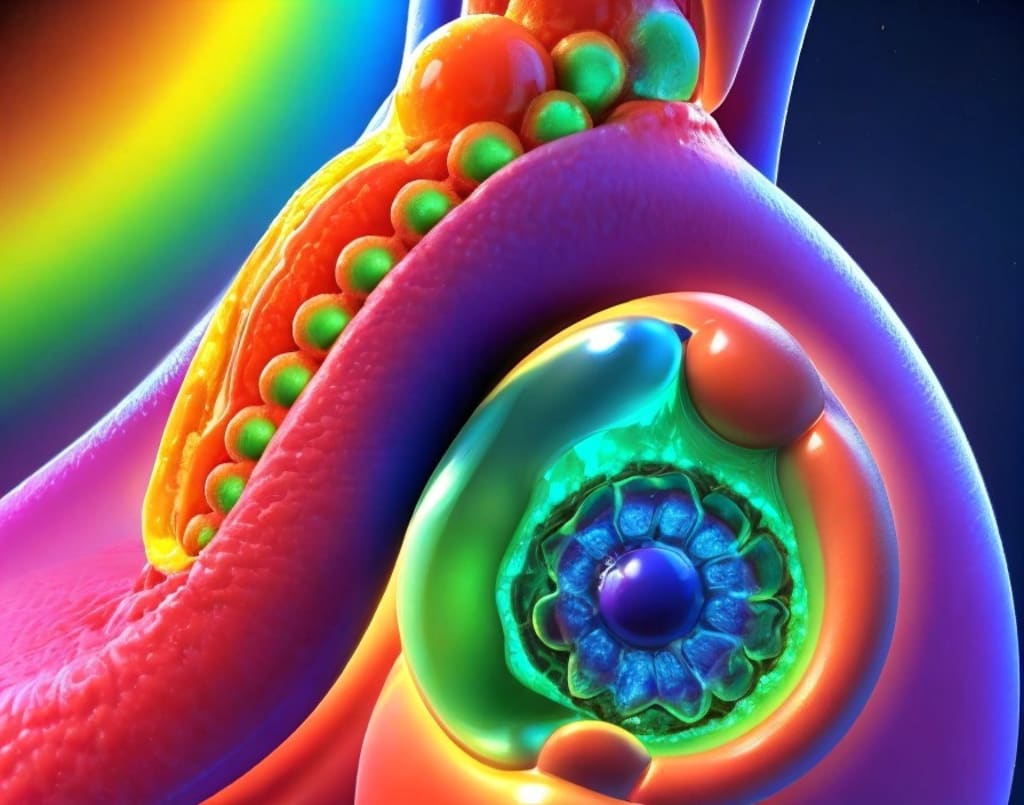The Power of Two: Unveiling the Wonders of the Human Reproductive System
Unraveling the Biological Blueprint for Life

The Power of Two: Unveiling the Wonders of the Human Reproductive System
The human body is an intricate machine, composed of numerous systems working in harmony to keep us alive and thriving. Among these, the reproductive system holds a unique and vital role – it allows us to create new life, ensuring the continuation of our species. This fascinating system undergoes dramatic changes during puberty, paving the way for sexual maturation and the potential for procreation.
The Symphony of Reproduction: Eggs Meet Sperm
The human reproductive system operates with remarkable precision. In females, the ovaries take center stage, responsible for producing ova, or eggs, the female reproductive cells. These eggs contain half the genetic information needed to form a new being. Meanwhile, the male reproductive system revolves around the testes, which produce sperm, the male reproductive cells, containing the other half of the genetic blueprint.
Fertilization, the union of egg and sperm, marks the beginning of a new life. This process typically occurs within the fallopian tubes, narrow pathways connecting the ovaries to the uterus. When fertilization takes root, the resulting single-celled zygote embarks on a remarkable journey of development.
The Cradle of Life: The Uterus and Placenta
The uterus, also known as the womb, serves as a nurturing haven for the developing embryo and later, the fetus. Its lining thickens and becomes richly vascularized in preparation for pregnancy, creating a supportive environment for the growing life.
The placenta plays a crucial role in nourishing the fetus. This temporary organ, attached to the uterine wall, acts as a bridge, facilitating the exchange of nutrients and oxygen from the mother to the developing baby, while also removing waste products.
The Female Reproductive System: A Closer Look
The female reproductive system is a complex network of organs working together:
- Ovaries: These paired oval-shaped organs are the powerhouses of the female system, producing eggs and crucial hormones like estrogen and progesterone. Estrogen is responsible for the development of female secondary sexual characteristics, while progesterone plays a critical role in preparing the uterus for pregnancy.
- Fallopian Tubes: These narrow tubes act as passageways for the eggs to travel from the ovaries to the uterus. Fertilization typically occurs within the fallopian tubes.
- Uterus: This muscular, pear-shaped organ serves as the nurturing home for the developing fetus throughout pregnancy.
- Vagina: This muscular canal serves as the birth canal during childbirth and also provides the pathway for menstrual flow.
- Breasts: While not solely related to reproduction, breasts contain milk-producing mammary glands that nourish newborns after birth.
The Male Reproductive System: Contributing to the Equation
The male reproductive system plays a vital role in fertilization and reproduction:
- Testes: These paired oval-shaped organs are responsible for producing sperm and the primary male sex hormone, testosterone. Testosterone is responsible for the development of male secondary sexual characteristics like facial hair and a deeper voice, and also regulates sperm production.
- Penis: This external organ serves a dual purpose – it is the passageway for both sperm and urine exiting the body, and it plays a role in sexual intercourse.
- Seminal Vesicles and Prostate Gland: These glands contribute to the production of seminal fluid, a nourishing and protective fluid that carries sperm during ejaculation.
The Journey Through Puberty: A Time of Transformation
As we transition from childhood to adolescence, the reproductive systems undergo significant changes during puberty. This period is marked by a surge in sex hormones, triggering the development of secondary sexual characteristics.
In males, puberty brings about changes like deepening of the voice, growth of facial and pubic hair, and increased muscle mass. In females, puberty results in breast development, growth of pubic hair, and the start of menstruation.
The Menstrual Cycle: A Cyclical Dance of Hormones
The female reproductive system undergoes a cyclical process called the menstrual cycle, which prepares the body for a potential pregnancy each month. This cycle typically lasts around 28 days and is orchestrated by a complex interplay of hormones.
During the follicular phase, an egg matures within the ovary under the influence of estrogen. If fertilization doesn't occur, the egg and the thickened uterine lining are shed during menstruation, marking the beginning of a new cycle. This cyclical process continues until menopause, when a woman's reproductive cycle ends.
Exploring Recent Advancements and Controversies: A Glimpse into the Future
The field of human reproduction is constantly evolving, with new technologies and discoveries shaping the landscape. Here are some key areas of discussion:
Assisted Reproductive Technologies (ART): For couples struggling with infertility, Assisted Reproductive Technologies (ART) offer a beacon of hope. These techniques, like In Vitro Fertilization (IVF), involve fertilization outside the body and implantation of the embryo into the uterus. Advancements in ART are making these procedures more accessible and successful. However, ethical considerations surround ART, such as the high cost of treatment, the potential for multiple gestations, and the use of donor eggs or sperm. Open discussions and regulations are crucial to ensure responsible and equitable access to these technologies.
Sex and Gender Distinction: Our understanding of sex and gender is undergoing a transformation. Sex refers to biological characteristics like chromosomes and reproductive organs, while gender is a social construct encompassing identity, behavior, and expression. The human reproductive system plays a role in biological sex, but it doesn't define an individual's gender identity. Recognizing this distinction is essential for promoting inclusivity and respecting the diversity of human experiences.
Conclusion: The Gift of Life
The human reproductive system is a marvel of biology, a complex network of organs and hormones working together to create new life. From the production of eggs and sperm to the nurturing environment of the uterus and the intricate dance of hormones, this system embodies the wonder of human reproduction. By understanding this fascinating system, we gain a deeper appreciation for the miracle of life and the incredible potential within each of us.
The future of human reproduction holds exciting possibilities with advancements in ART offering hope for those struggling with infertility. However, navigating ethical considerations and fostering a society that understands the distinction between sex and gender are crucial for ensuring responsible and inclusive practices.
About the Creator
suren arju
Hi there! I'm Suren, your startup guide. Entrepreneur, writer, dreamer - I share insights, tips & stories to fuel your startup journey. Ready to explore, learn & win together? Join me & let's redefine how we launch, learn & leap!
Enjoyed the story? Support the Creator.
Subscribe for free to receive all their stories in your feed. You could also pledge your support or give them a one-off tip, letting them know you appreciate their work.





Comments
There are no comments for this story
Be the first to respond and start the conversation.